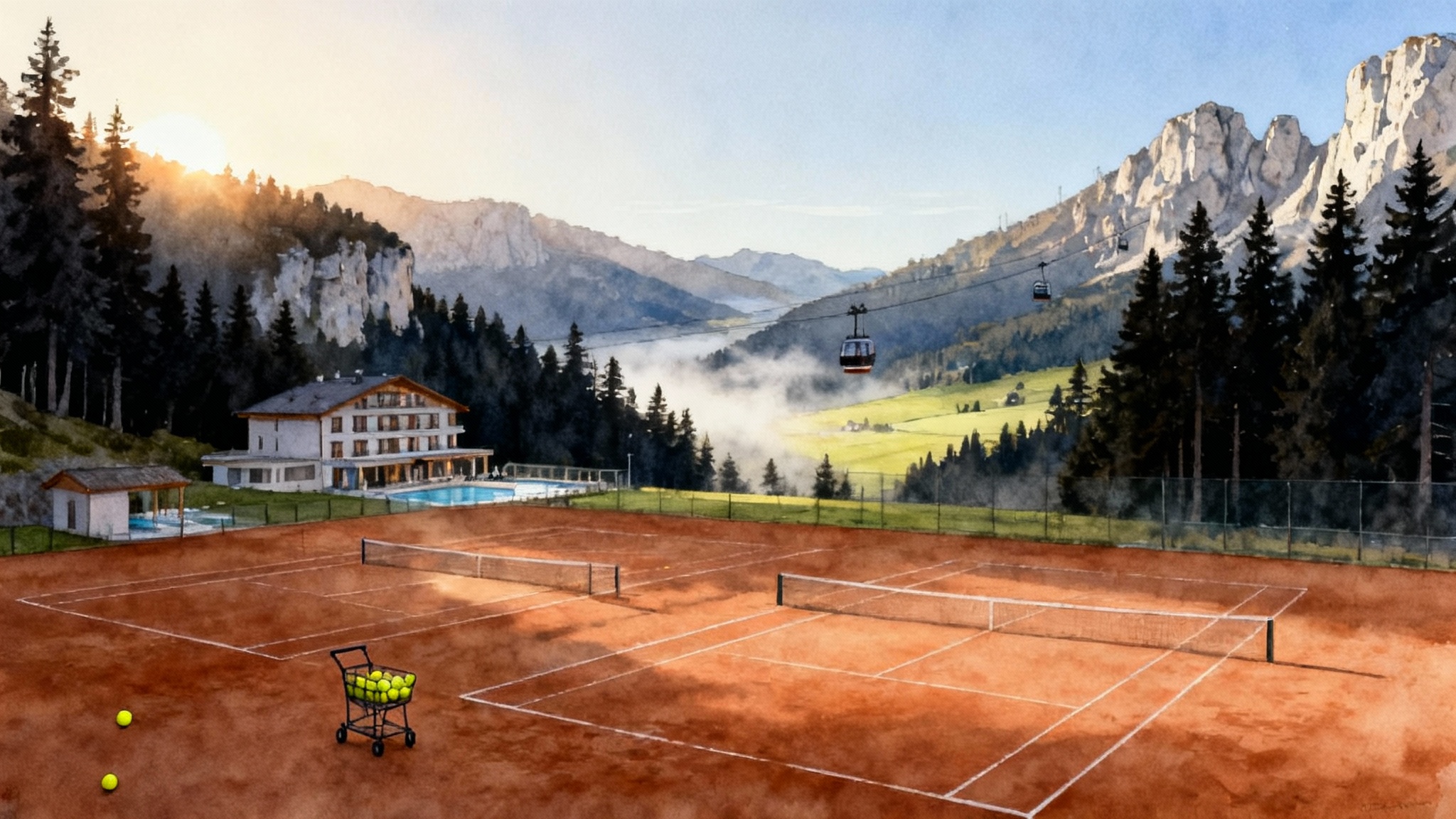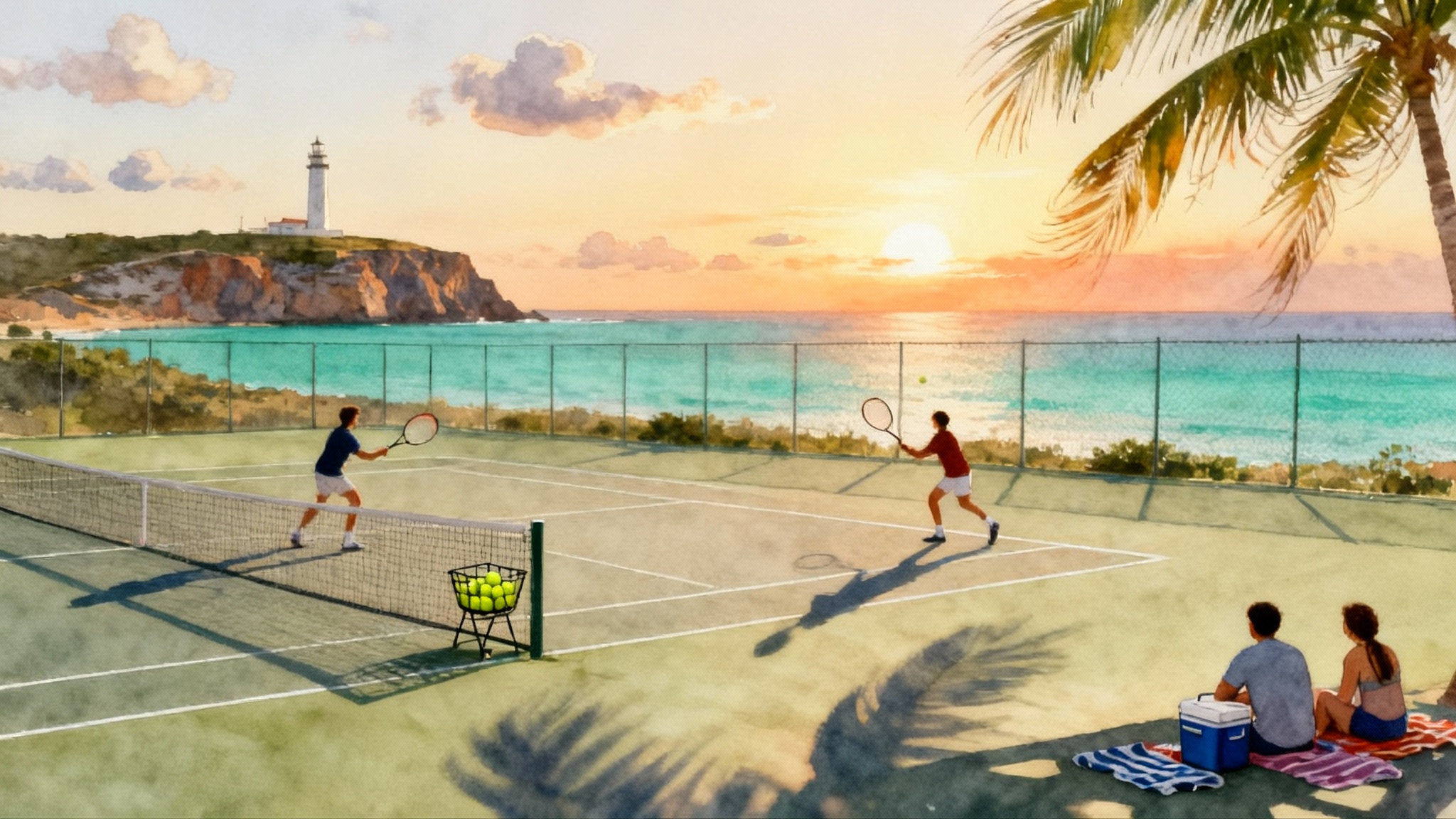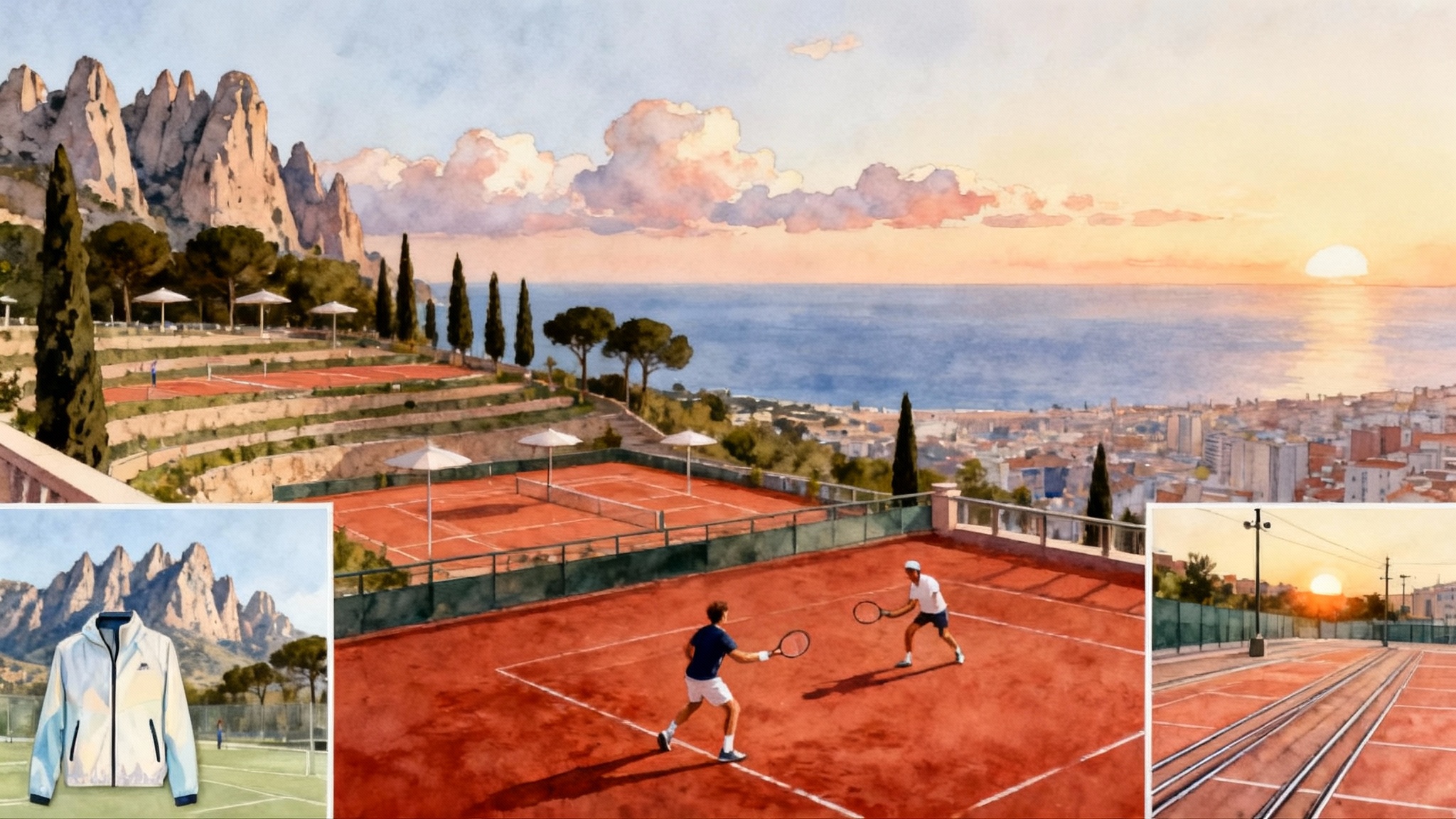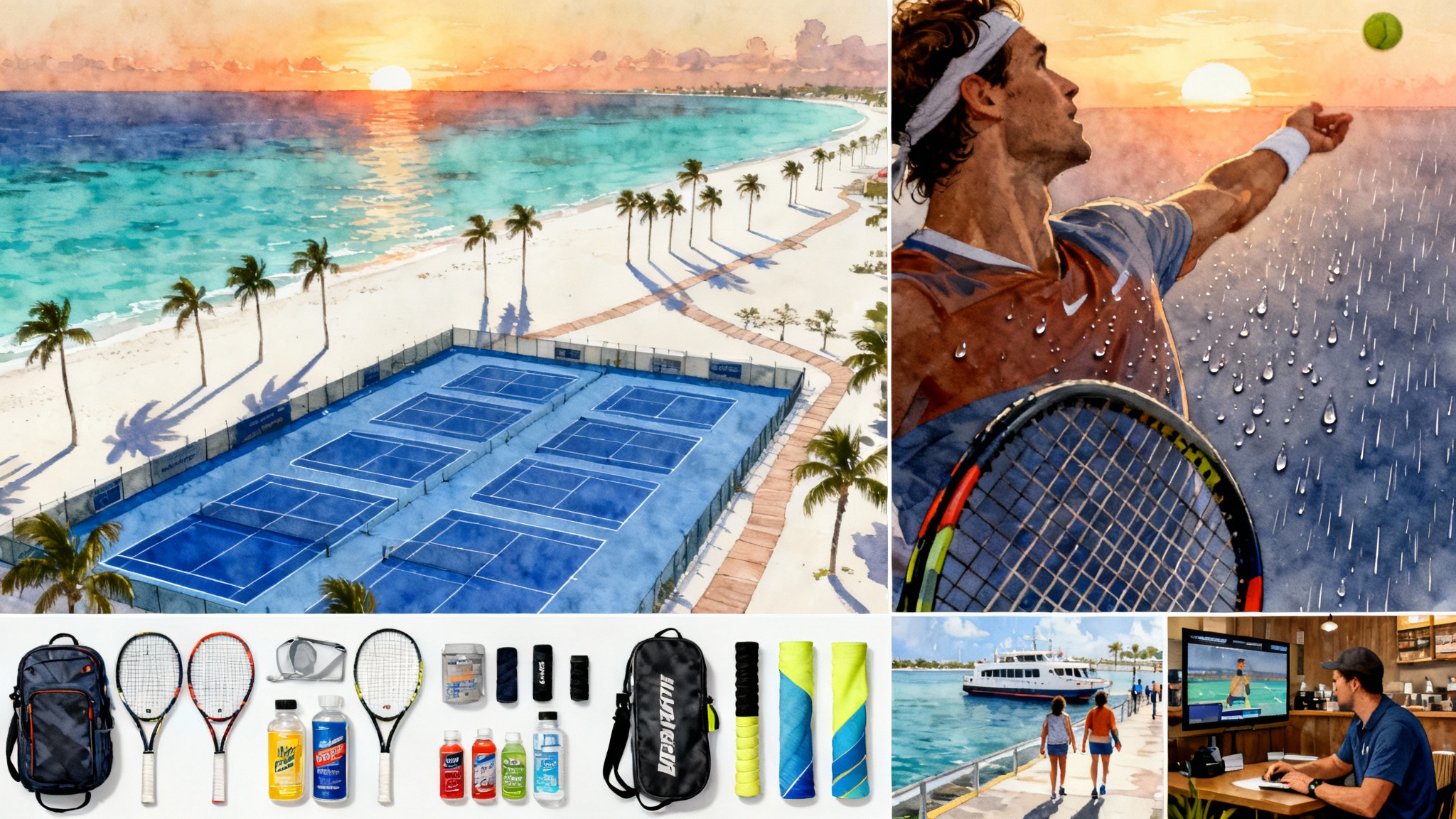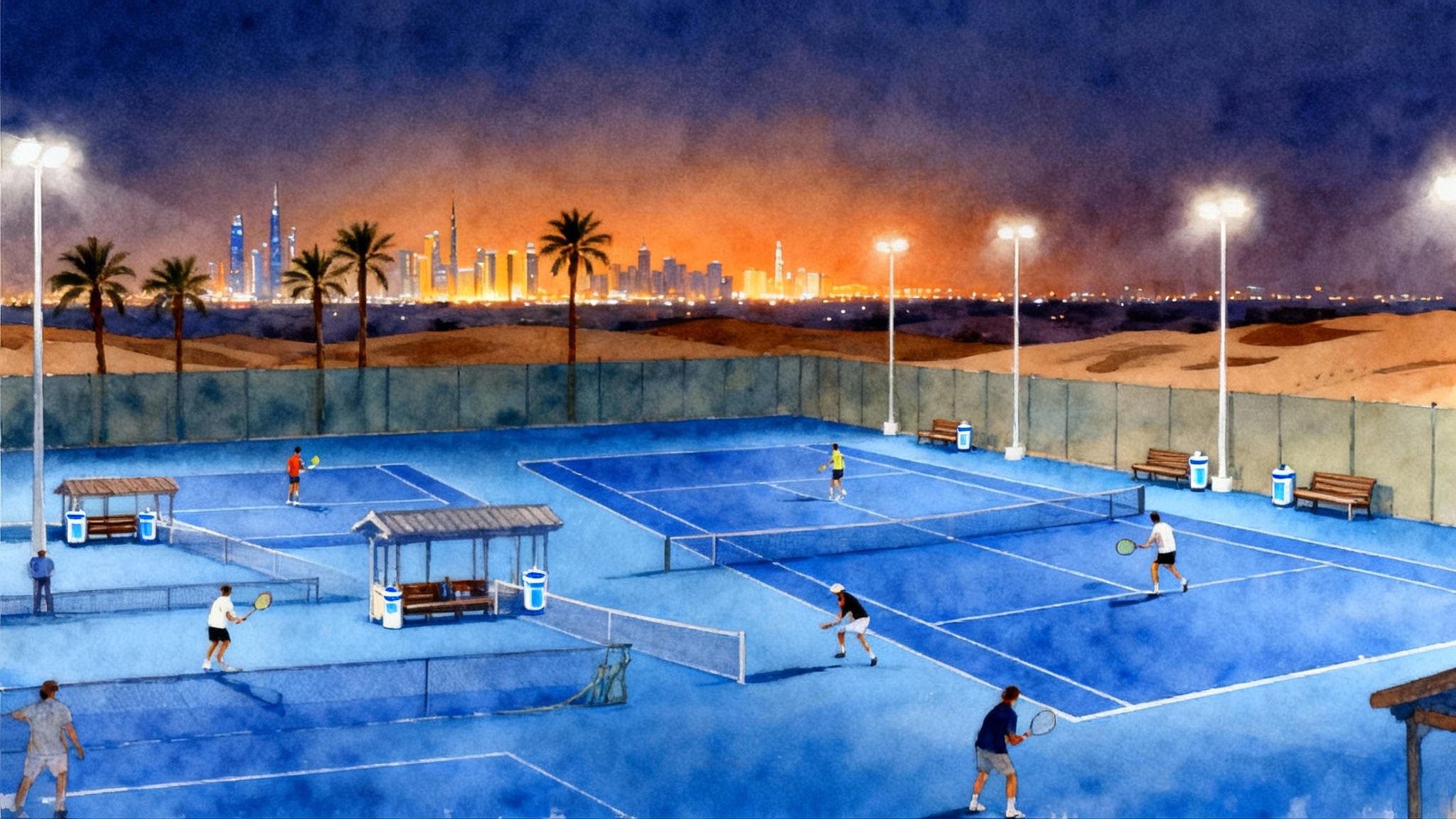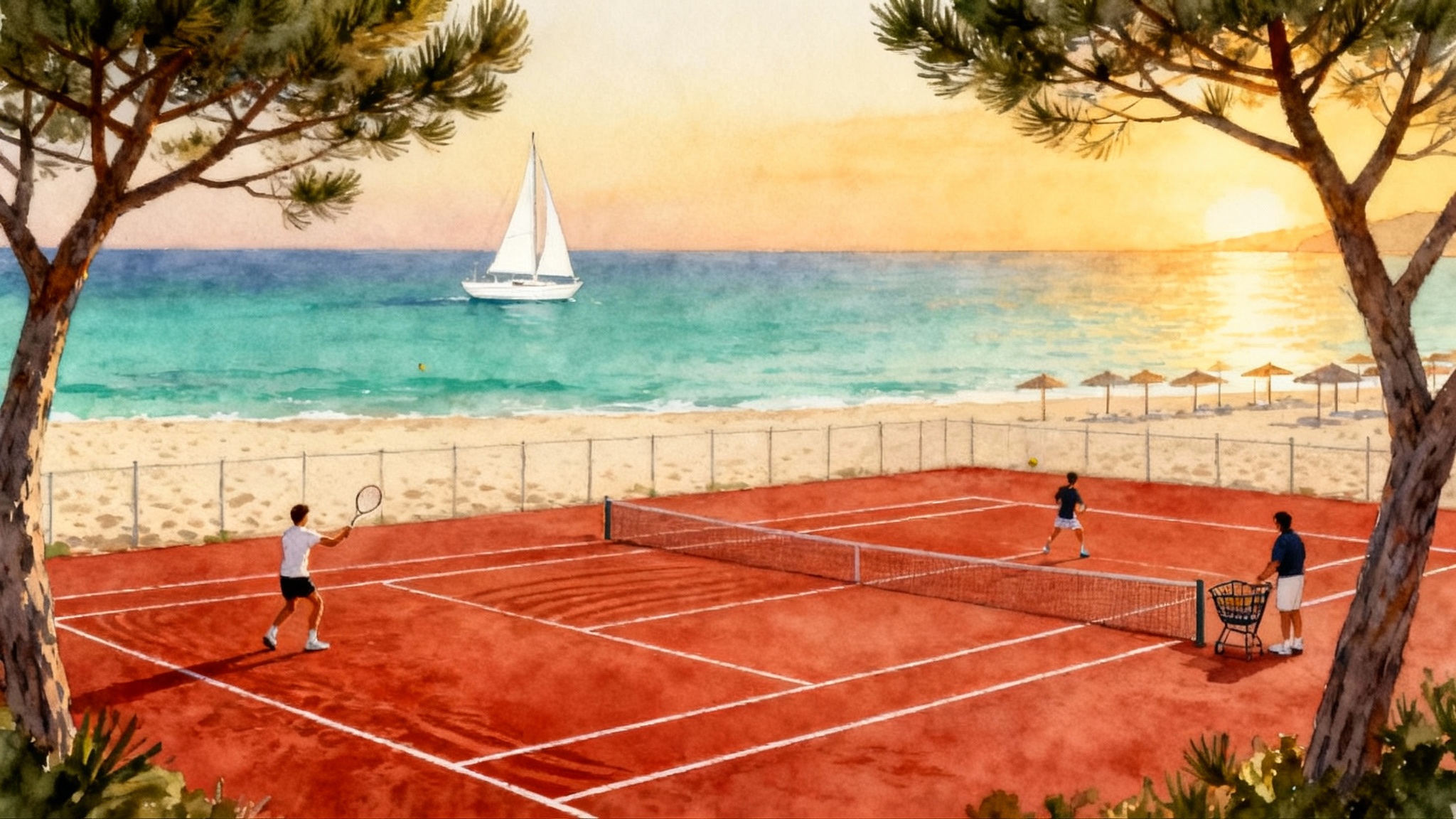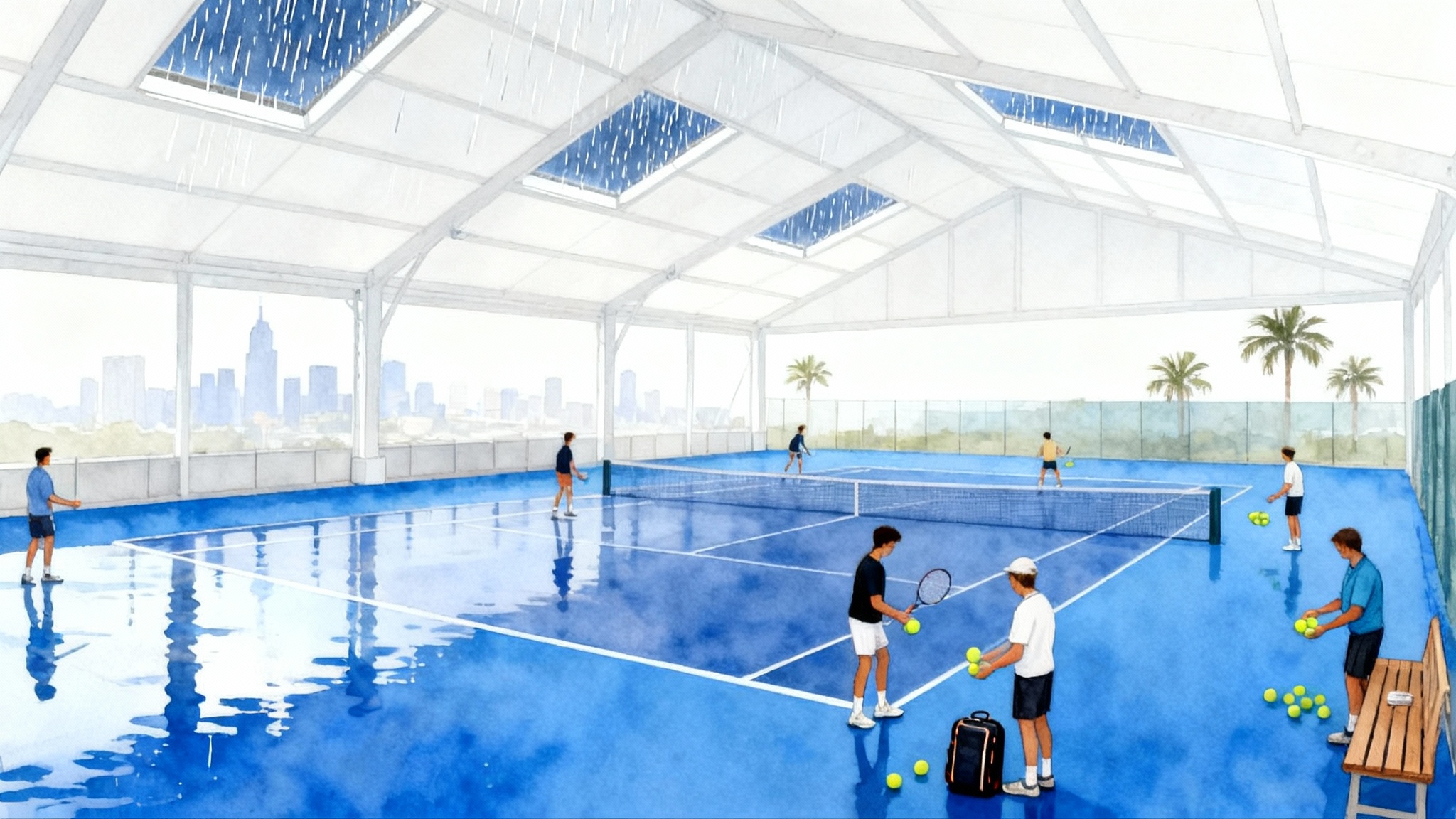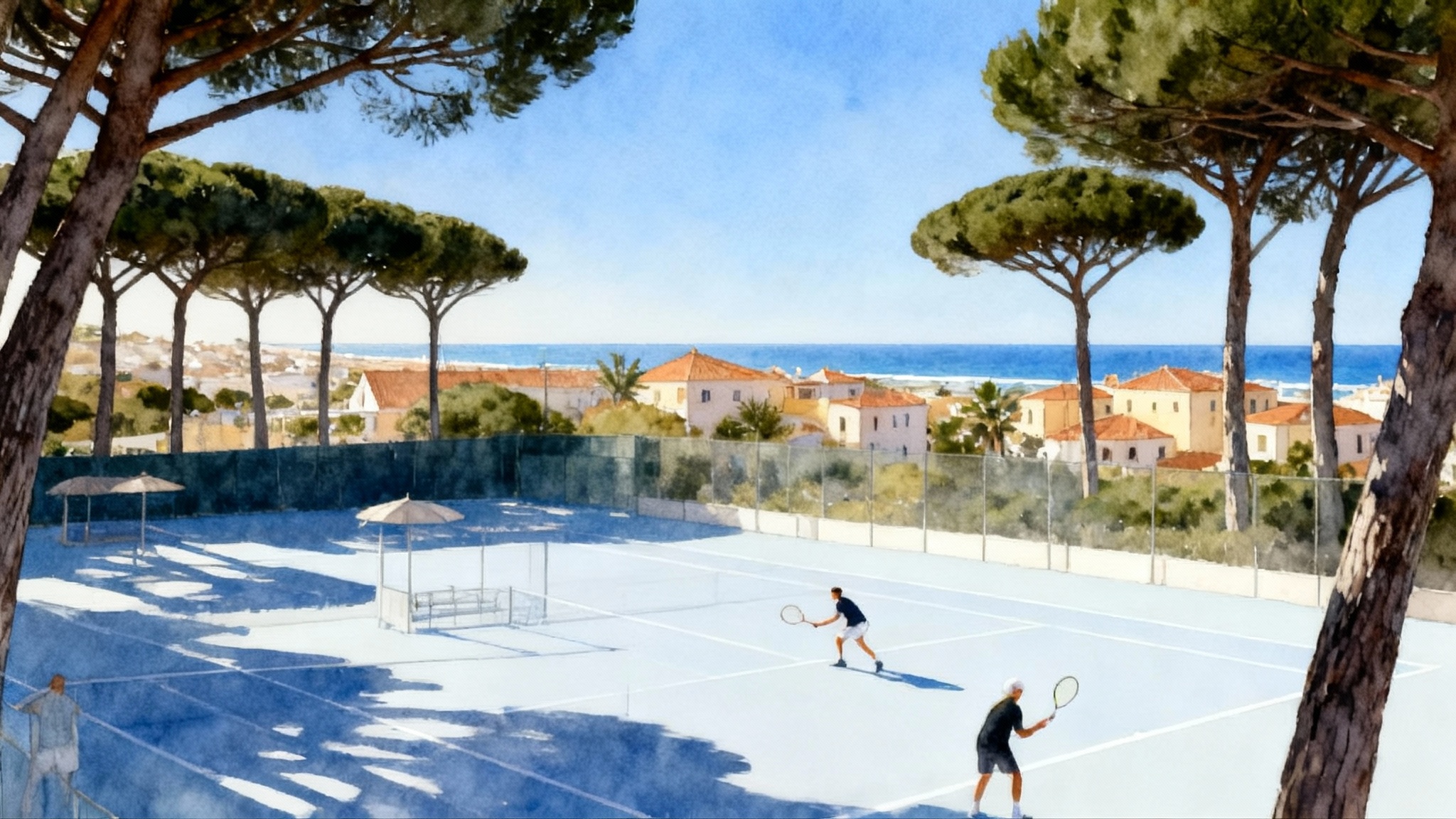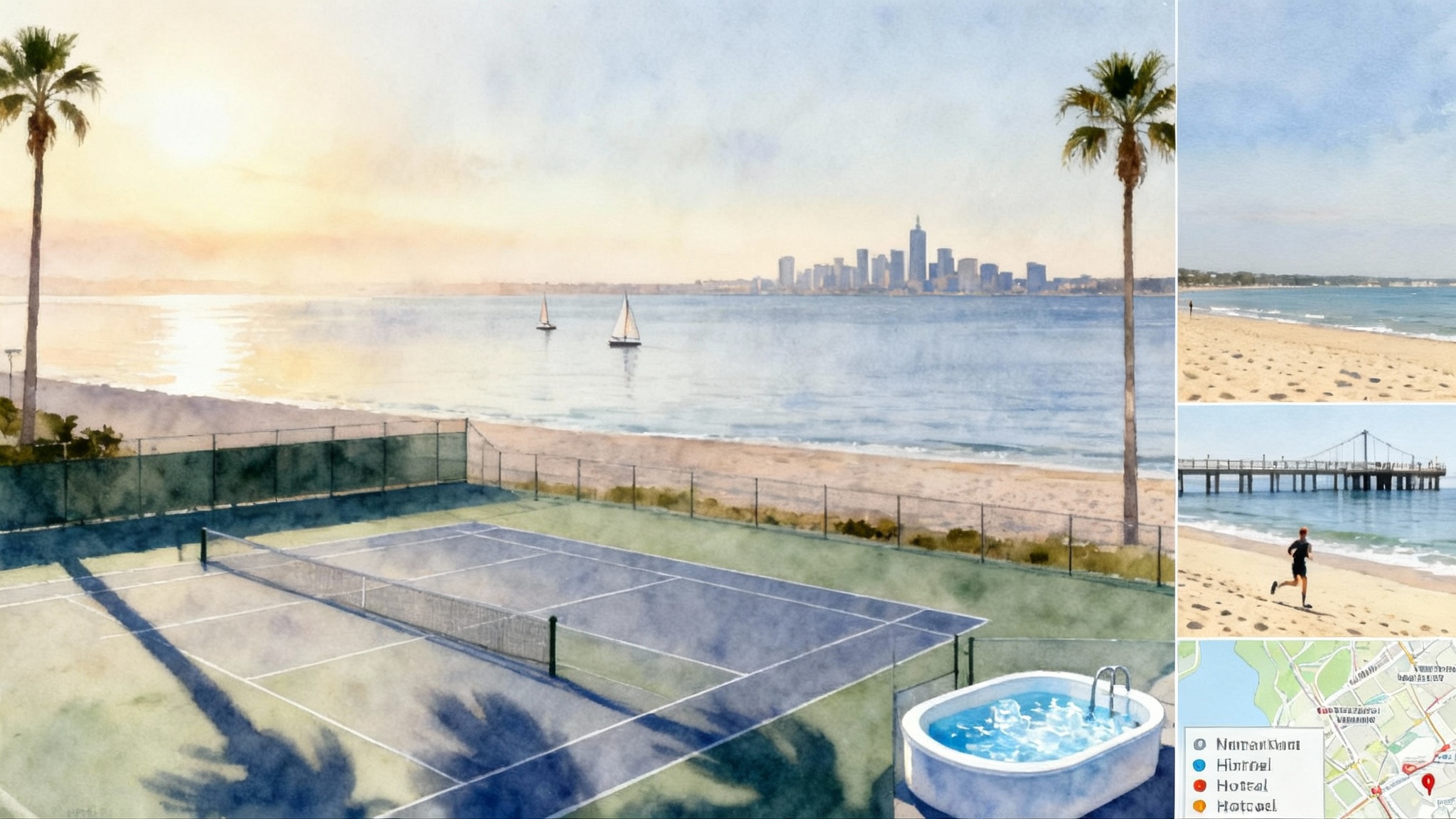Lake Nona Winter Tennis 2025–26: Build a GTA Training Week
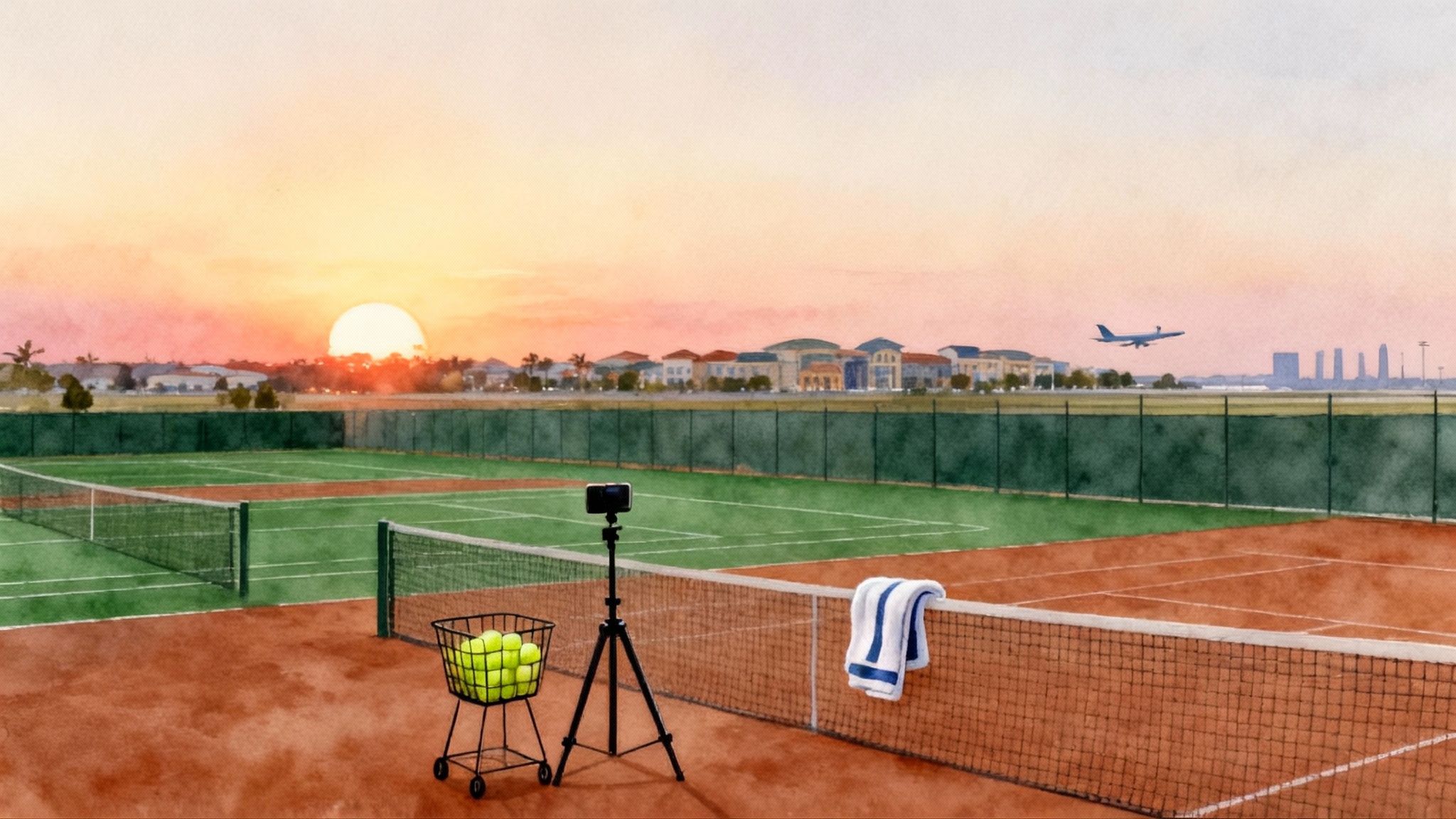
Why Lake Nona in winter works for real progress
Central Florida’s cool, dry season from roughly late November through March creates a sweet spot for tennis: cooler mornings for technical work, lower afternoon humidity than summer, and long daylight hours for match play. If you want predictable training without a winter parka, Lake Nona in southeast Orlando delivers. You also get fast airport access, family attractions, and a serious tennis ecosystem all within 10 to 30 minutes.
This guide shows how to build a three to seven day training week centered on Gooding Todero Academy in Lake Nona, with afternoon match play on hard and clay, recovery planning, where to stay within 10 to 20 minutes of Orlando International Airport (MCO), budget ranges, and sample schedules that keep both athletes and families happy.
Your training hub: Gooding Todero Academy
Gooding Todero Academy sits inside Lake Nona. The program is run by experienced coaches who blend professional tour drills with age-appropriate progressions. The key for winter: consistent morning technical blocks in small ratios, followed by structured afternoon work. Their full-time rhythm places high-quality reps into two daily windows that are perfect for short training weeks. Read our Gooding Todero Academy profile and check current times on the official Gooding Todero Academy training blocks.
How to use mornings well
- Start with movement prep and three to five specific objectives for the day, not a crowded checklist. Think one grip upgrade, one swing-path cue, and one footwork pattern.
- Record a few key sets from the deuce and ad sides using a phone on a fence clip or tripod. Keep the clips short and purposeful so analysis stays focused.
- Make a same-day feedback loop. A five-minute courtside review after the main drill often beats a long film session at night when fatigue blurs recall.
Video analysis without overkill
- Choose one stroke family per day. Example: day 1 forehands, day 2 backhands, day 3 serves and returns.
- Use slow motion for checkpoints only: contact height, spacing, and the shape of the finish. Avoid chasing frame-by-frame perfection.
- Pair each clip with a single action item you will test in the next block. No more than two cues per session keeps the brain clear.
Afternoons on hard and clay, plus an optional campus upgrade
Afternoons are for match play, serving reps, and problem-solving sets. In Lake Nona you can mix surfaces easily. Green clay helps rhythm, height control, and defense-to-offense patterns. Hard courts sharpen first-strike tennis and return depth. That contrast turns a short week into a mini pre-season.
For bonus variety, consider booking public court time at the nearby USTA National Campus in Lake Nona. It sits on 64 acres with dozens of lighted courts across green clay and multiple hard-court types, plus dedicated areas for leagues and collegiate play. Indoor courts belong to Player Development and are not generally open to the public, so treat rain days as gym or analysis days. Review hours, surfaces, and booking rules in the USTA National Campus guide.
Targeted afternoon work
- Serve ladders: 30 to 50 quality first serves, then 20 to 30 kick or slice second serves. Keep a service notebook with zones hit and make percentages.
- Return games: two in every four practice sets should start at 30-all to raise focus on point-starting patterns.
- Preset plays: for example, wide serve to forehand plus open-court forehand; or backhand body serve plus backhand line redirect. Repeat five times, then play it live.
Build a three to seven day microcycle
Training weeks work best when the load undulates: one higher-stress day, one medium, one lighter. That pattern lets you stack quality without frying your legs or your attention. Use this simple matrix.
- High day: 2 court blocks, 1 short strength session, 1 mobility block; total on-court 3 to 3.5 hours.
- Medium day: 2 court blocks; total on-court 2.5 to 3 hours. Remove the gym or shorten it to activation.
- Recovery day: 60 to 90 minutes light on court or fully off; prioritize mobility, pool work, and film.
Family-friendly stress control
- Put early park mornings or nine holes of golf on medium or recovery days, not the night before a high day.
- Cap total walking time on theme park days. Two to three focused hours is plenty if you train that morning.
Sample five day plan
Day 1 — Medium load
- 8:30 to 9:00: Dynamic warm-up and acceleration mechanics
- 9:00 to 10:30: Forehand spacing and height windows; 20-ball live hitting sets
- 10:30 to 10:45: Video check and one cue for the afternoon
- Lunch and downtime
- 2:30 to 4:00: Doubles patterns and returns; serve to targets 30 balls
- 4:00 to 4:20: Mobility and hydration reset
Day 2 — High load
- 8:30 to 10:30: Backhand patterns and neutral-to-offense transitions on clay
- 10:30 to 11:00: Film review; note two match goals
- 1:00 to 1:30: Strength block: push-pull-hinge, three rounds; medicine ball rotational work
- 2:30 to 4:00: Match play first to eight; return games start at 30-all; serve 40 balls
Day 3 — Recovery and technique
- 9:00 to 10:15: Light rally work and volleys; serves at 60 percent effort focusing on rhythm
- Late morning: Pool recovery or easy spin bike 20 minutes; guided mobility 15 minutes
- Optional: short family outing or skill session at the wall
Day 4 — High load
- 8:30 to 10:30: Serve and first-ball patterns on hard courts; deuce and ad playbooks
- 2:00 to 3:30: Play two short sets; tiebreaker focus; 25 second-serve kick reps
- 3:30 to 3:45: Mobility and breath work; 5 minutes film notes
Day 5 — Medium load and test sets
- 8:30 to 10:15: Combined forehand-backhand patterns; approach and volley finish
- 2:00 to 3:30: Match to four games with no-ad points; serve accuracy game to 21
- Wrap: write three takeaways and two drills to keep at home
Sample seven day plan with smart add-ons
- Day 1 Medium: Arrival day courts; 90 minutes feel and spacing; 20 serve reps; early dinner and sleep.
- Day 2 High: Morning backhand and return work; afternoon match to eight; 30 serves; 20 minutes strength.
- Day 3 Medium: Clay court rhythm; doubles formations; serve targets by zone; pool recovery.
- Day 4 Recovery: No courts or 60 minutes easy. Walk, swim, or golf nine holes after 3:00 p.m. Keep steps under 10,000.
- Day 5 High: Serve plus first ball, then two sets; short gym; 30 kick serves.
- Day 6 Medium Theme Park: Early entry if you go. Keep it to a focused three hours. Back by noon for a nap; 60 minutes light serves and returns before dinner.
- Day 7 Test Day: Full warm-up, one competitive match; film two return games and two service games. Finish with 20 minutes mobility.
Recovery, fitness, and rain backup
Recovery is your force multiplier. Build it into the schedule the way you schedule courts.
- Sleep: plan for 8 to 9 hours. Keep the room cool and dark; avoid late-night screen marathons.
- Hydration: Central Florida is kinder in winter, but you still need electrolytes, especially on clay. Bring tablets or a premixed powder and sip throughout.
- Mobility: 10 minutes after every session. Hips, thoracic spine, and calves make or break your footwork the next morning.
- Pool or contrast showers: simple, repeatable, and available even if you are not at a training center.
Local options if the weather turns:
- A general-use performance gym in Lake Nona offers day passes and an indoor aquatics center, so you can turn a rainy morning into strength, core, and mobility work without losing training quality. Keep the session under 45 minutes and avoid heavy eccentric loading if you plan to play later.
- Classroom time: do a 20-minute film session with a single theme. For example, forehand spacing or second-serve toss height. Then write one cue you will test tomorrow.
- The USTA National Campus indoor courts are for Player Development and not generally public. Treat rain days as off-court skill work rather than court chasing.
Where to stay within 10 to 20 minutes of MCO
Pick a stay that matches your training style and family needs. These options sit close to Gooding Todero Academy, the USTA National Campus, and Orlando International Airport.
- Lake Nona Wave Hotel: a design-forward hotel in Lake Nona Town Center about six miles from the airport. Expect walkable dining and quick drives to both training sites.
- Courtyard Orlando Lake Nona: reliable, close to area hospitals and the town center; good for shorter trips that still want a pool, gym, and simple dining on site.
- Residence Inn Orlando Lake Nona: spacious suites with kitchens and breakfast included. A solid base for families or two players sharing a week of training.
If you like vacation rentals, look in Laureate Park and nearby subdivisions for homes with garages and easy parking. A car is strongly recommended; rideshares work for one-off trips, but week-long training runs smoother with your own schedule.
Budget ranges and booking timelines
Rates change by season and event weeks, so treat the numbers below as planning ranges for winter 2025-2026. Confirm current pricing when you book.
Training and court fees
- Private lessons: commonly 125 to 220 dollars per hour in the Orlando market depending on coach seniority and location.
- Small-group or academy blocks: often 50 to 110 dollars per 90 to 120 minute block per player.
- Public court fees: budget 15 to 35 dollars per hour for hard or green clay; ball machine rentals can add 15 to 25 dollars.
Lodging and transport
- Hotels: 140 to 500 dollars per night depending on property, room type, and event weeks.
- Rental car: 45 to 90 dollars per day including taxes and toll transponder; budget a little extra if you plan to park at theme parks.
Booking timelines that work
- Flights: 45 to 75 days out typically balances price and schedule on major United States carriers into MCO.
- Academy blocks: contact Gooding Todero Academy four to eight weeks ahead for peak weeks in January and February, sooner if you want consistent daily times.
- USTA National Campus courts: reservations generally open close to 48 hours in advance for public play; set calendar reminders and book right when the window opens for preferred hours.
Theme parks and golf without derailing your load
The temptation to go all day at a park is real. To keep your training quality high, use these guardrails.
Theme park plan
- Do not stack a late park night before a high training day. If you want fireworks, make the next morning a recovery block.
- Rope-drop strategy: go early, pick three rides, leave by noon, nap, then do a light 45-minute court session.
- Shoes and steps: wear tennis shoes, not sandals; cap walking to two to three hours total.
Golf plan
- Choose a nearby public course and book nine holes after 3:00 p.m. Walking nine with a carry bag adds fatigue; take a cart to keep your legs for the next morning.
- Treat it like active recovery: swing smoothly and avoid long range sessions after a heavy on-court day.
Packing list and local logistics
- Racquets and strings: bring two frames and an extra set of strings; the clay-hard mix can fray strings faster than you expect.
- Sun and sweat: hat, sunglasses, wristbands, and two towels; winter sun is gentle but still bright.
- Hydration: electrolyte tabs and a 32-ounce bottle; refill between blocks.
- Video kit: phone tripod or fence mount, fresh power bank, and a small notepad for cues.
- Navigation: State Road 417 is a simple connector from many parts of Orlando to Lake Nona and the airport. Have a toll plan or transponder with your rental car.
Compare other winter bases
If you are weighing Florida against the Southwest, skim Arizona winter tennis guide and the Phoenix Tennis Academy to see how schedules and surfaces compare for short training weeks.
A week that actually moves the needle
Winter in Lake Nona gives you a controllable environment, a high-level academy culture, and access to one of the most complete public tennis campuses in the country. Keep mornings technical at Gooding Todero Academy, spend afternoons testing patterns on both clay and hard, and protect recovery with the same intention you bring to footwork. Build your week with purpose, give the family targeted windows for fun, and you will fly home with a clearer game plan, better patterns, and the energy to keep training once you are back on your home courts.
